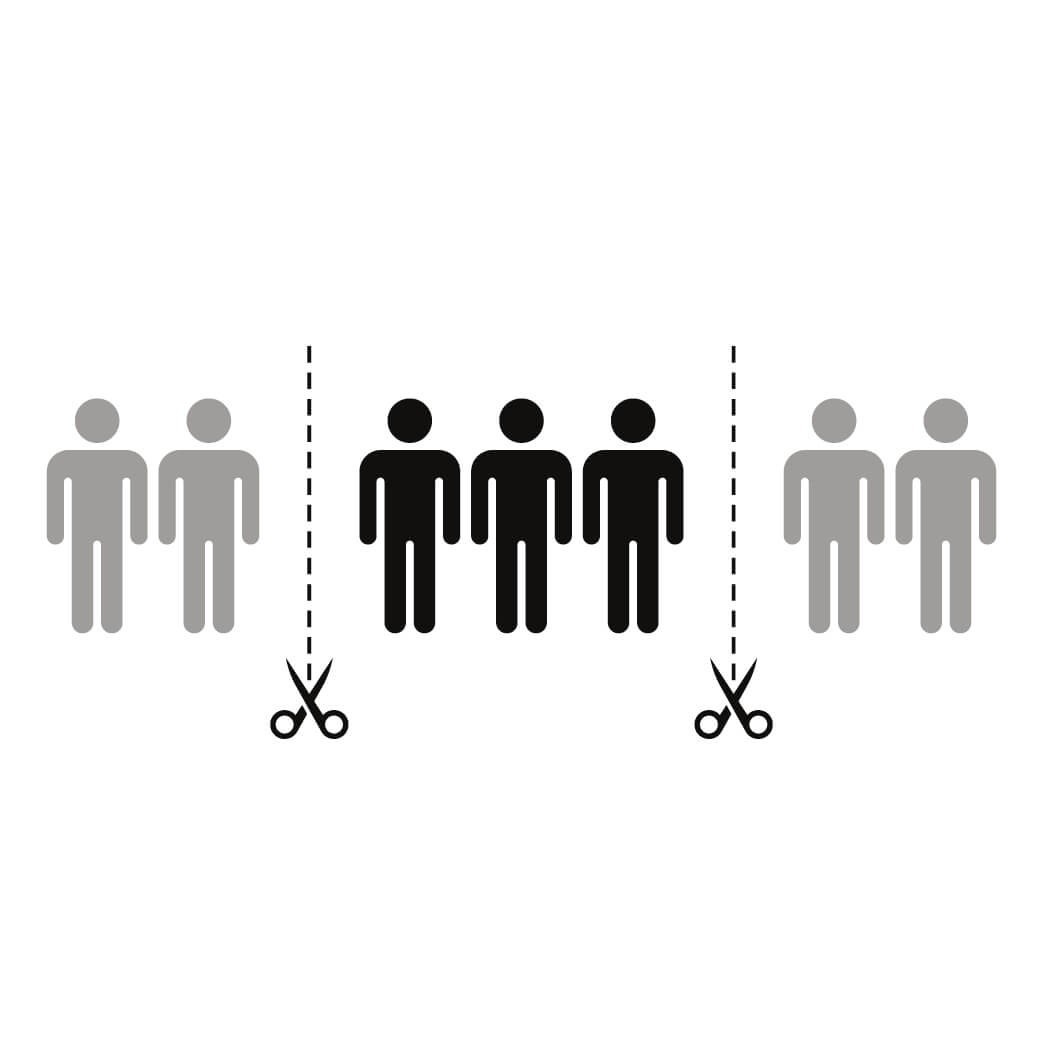
Just over twenty years ago I was a single man in search of adventure and so I packed up my Jeep and did a month-long lap of the US from Washington DC to Seattle to LA and back to DC. It was a tremendous adventure that I would recommend to anyone; this is such a beautiful country, full, mostly, of friendly people. The first leg of my trip was a herculean drive from Washington DC to Badlands National Park in South Dakota. I left DC at 3:00PM on one day and pulled into my campsite at 9:00PM the next night. The adventure had begun.
A few weeks before I left DC, I was walking home from downtown and strolled by a yard sale in Dupont Circle. Then, like now, I find yard sales hard to walk past so I went in for a poke-around. I left with a real treasure: a book called “Off the Beaten Path,” a guide to many less-known sights around the US. I went home and immediately began re-routing my itinerary to take in a number of the sites I read about, the first of which I visited after a couple of days exploring the Badlands.
Jewel Cave National Park, near the town of Custer in SD, is apparently the third longest cave system in the world. I’d never heard of it. “Off The Beaten Path” mentioned that there were three tours advertised to the public. But they also mentioned one “unpublished” tour that was a four-hour guided spelunking exploration. That was for me. So, early on the day, I found myself at the park HQ, checking in with a few other intrepid explorers. Rather disconcertingly, as part of our pre-excursion preparation, they led us to a block of concrete with an 8 ½ inch x 24-inch hole cut through it. Our guide told us that we were going to encounter a similar hole during our tour, and they wanted each of us to prove we could wriggle through it above ground so they would not need to send a rescue crew a mile underground to extricate us. Two people quit there and then.
About 2 hours in, the guide and I had navigated a tricky section and were waiting for the others to catch up. I asked if I could go ahead a bit. She said, OK, within reason: I could go up a narrow section, through the “Hurricane Corner” (the 8 ½ x 24 hole) and into a large cave and wait for the group there. Off I went. I wriggled on my stomach and eventually found myself in a large chamber. I sat down on an outcrop in the middle.
Then I turned off my light and waited for the attack to begin…
If someone had told my parents that I would willingly sit in a cave deep underground in total “cave” darkness they would have been no more surprised than if they had found out I was strolling on the face of Mars. So all-consuming was my fear of the dark as a child, that my parents took me to see a therapist at around age 5. (It is difficult in these times to give an impression on how unusual this was for a military family living in northern England, suffice to say that three decades later when my eldest sister found out my then-wife and I were seeing a marriage counselor, she called me up and reamed me out for doing so.)
I was petrified of darkness. I had to have the lights on in my bedroom, the lights on in the hallway and the living room door had to remain wide open so I could hear people.
And then something changed during my time at boarding school. On one occasion, a friend and I crawled through the bars leading down to the dungeons of Dover Castle and explored the dark and dank passageways of the 900-year-old structure. Another time, the same friend and I managed to force our way into one of the deep underground bunker complexes, left over from WWII, cut into the Dover cliffs.
Eventually, I would just find places to walk alone in complete darkness and practice “swallowing the panic,” as I would call it, and not allowing myself to look behind me. Culminating in me sitting deep underground in a claustrophobe’s nightmare in the dark of Jewel Cave, swallowing the panic. Such a rush, I loved it.
The reason I tell this story is that I believe it was a key to understanding a trait I have come to notice about myself: I have a long predilection for relentlessly buying flashlights, lanterns, and antique lighting fixtures. I have multiples of every kind of light. Various handhelds, electric, propane, rechargeable, etc. And it only recently occurred to me that this was a vestige left over from my childhood fear of the dark. Even though I now love the dark, the ripples of the past are still strongly apparent.
Because these are the kinds of things I think about for a living, I (finally) made the connection on it. But there are so many people, most people I believe, that will never think about these things. Will never draw a line between far past experiences and current behaviors. It’s akin to reflexive behavior. If you touch something hot, your body will reflexively recoil to avoid injury. If you have deep-seated fear of something – or you did in your formative years – you are likely to have developed behaviors and habits to protect yourself from that fear. But instead of the instant and very noticeable searing pain from the hotplate, this behavior may come on slowly over many years and thus it is not obvious change and development; it’s just, “who you are.” (I am keenly aware that psychologists would read this and say, “Really, Einstein…?”)
My simple personal story is about childhood fear of the dark and flashlights. But what about people that grew up living in physical fear? People who were bullied; people with alcoholic parents; people who grew up in a profoundly unhappy household? People who grew up shunned or as second-class citizens? People who have never felt love. Each of these situations, day by day, layer by layer, build a personal “life prism” through which we see the world. And how we see the world will influence how we interact with it. How we see the world will influence the goals we make, the partners and friends we choose; how and who we love – and who we don’t; how we treat others. The whole path of our lives can be directed and diverted by the prism through which our emotions are developed and triggered.
One of my good friends is a Doctor of Physical Therapy and a pragmatic reality of his professional life is that most of the people he diagnoses and treats will not do the at-home therapy he prescribes. Even though he has provided them a pathway to health through a month or two of exercises, most people just don’t do them. They’d much rather take a pill – or, amazingly, even have an operation, as long as the fix comes via external forces.
Sadly, many people follow a similar path in matters of mental wellness. Too often, people want to find a “solution” via a pill, or alcohol, or behavior that lets off a pressure valve in the short-term but in actuality will increase the pressure in the long. Add to that the general unawareness of how life and its trajectory can be influenced by early experiences and people walk through life more like a pinball than a precision instrument.
And now we find ourselves in a time-period where mental wellness is becoming a critical issue. After two years of a pandemic, with economic death-knells sounding over inflation; a war in Europe which has super-powers facing-off for the first time in modern history, all mixed in with the constant inexorable effects of climate change and a cancerous political climate, we are seeing fear and stress climbing to all-time highs.
When all of that is shone through the various occluded life-prisms that we all have to some degree, it is no surprise that we are seeing a fraying of the fabric of our society. Much as it would be with a real glass prism, if too much pressure or shock is applied, it will crack or shatter. One brief look at any news-site comments area, or the plethora of “in public” videos playing across social media, shows that intolerance, rudeness, anger and violence are increasing dramatically across society.
Mental wellness for all of us needs to become a priority. For ourselves, for our loved ones, for our communities and particularly for our young people, we need to “do the exercises” that will create resilience and healthy habits and develop a heightened awareness of when we or those we love are pursuing a path of self-harm.
Take a step towards mental wellness today. Encourage someone you know who needs to. Some resources are below.
– Simon Dixon
Mental Health resources
Personality Tools

When humans face true cataclysm, we pull together. When it’s about money and power, not so much.

When people see public health messages directed at them, they are very aware that others can see them also and it can trigger concern of how other people in the community now think about them.
People seek to have power over their own lives. Teens, adults, older adults – everyone. What happens when they feel powerless? What happens when you or your communications make them feel they have less power?
The way we talk to others demand that they accept an identity for themselves, and sets up a particular relational dynamic. If we're not careful, that identity can be stigmatizing or turn away the very people we're trying to help.
Get the latest posts and updates delivered to your inbox.